
This article is part of the Delay Analysis 101 series, which is also available as a LinkedIn newsletter.
One of the key performance indicators of a project is time: when will the project complete. Time drives the fixed costs assumed by the Contractor, and the financing costs assumed by the Employer. The largest fixed costs of a project typically relate to indirect project overhead (site facilities, top management, etc), which is tightly related to the project completion date. On the other hand, Employers will impose delay penalties or liquidates damages in order to seek relief should the Contractor deliver late and therefore increase the financing cost, generate loss of revenue, opportunity, etc.
Hence it becomes evident that one should closely control the project completion date. Complex construction projects are often made of thousands of activities. Sometimes, hundreds of them progress at the same time. Yet, the successful development of the project often depends on the successful progress of only a few of these activities: they are said to be critical, which is the concept our founder Amaël Olivier we will explore in this article.
Abstract
The critical path is a tool that allows to monitor which activities need special attention in order to complete a project on time. There are 4 types of critical path, each of which answers a different question:
- The As-Planned critical path – Before the works started, what was the sequence of activities which was reasonably expected to drive the project completion date?
- The As-Built critical path – Once the works were completed, what was the sequence of activities which eventually prove to have driven the project completion date?
- The Contemporaneous critical path – At a given time during the project, what was the sequence of activities which was reasonably expected to drive the project completion date?
- The Actual critical path – What was the sequence of activities which were reasonably perceived to drive the project completion date at the time they were ongoing?
Critical activities and delay events
An activity is critical when a change in its duration results in a change of the project duration. Hence, delays to a critical activity means delays to the project completion date. This is illustrated in the animated snippet below.
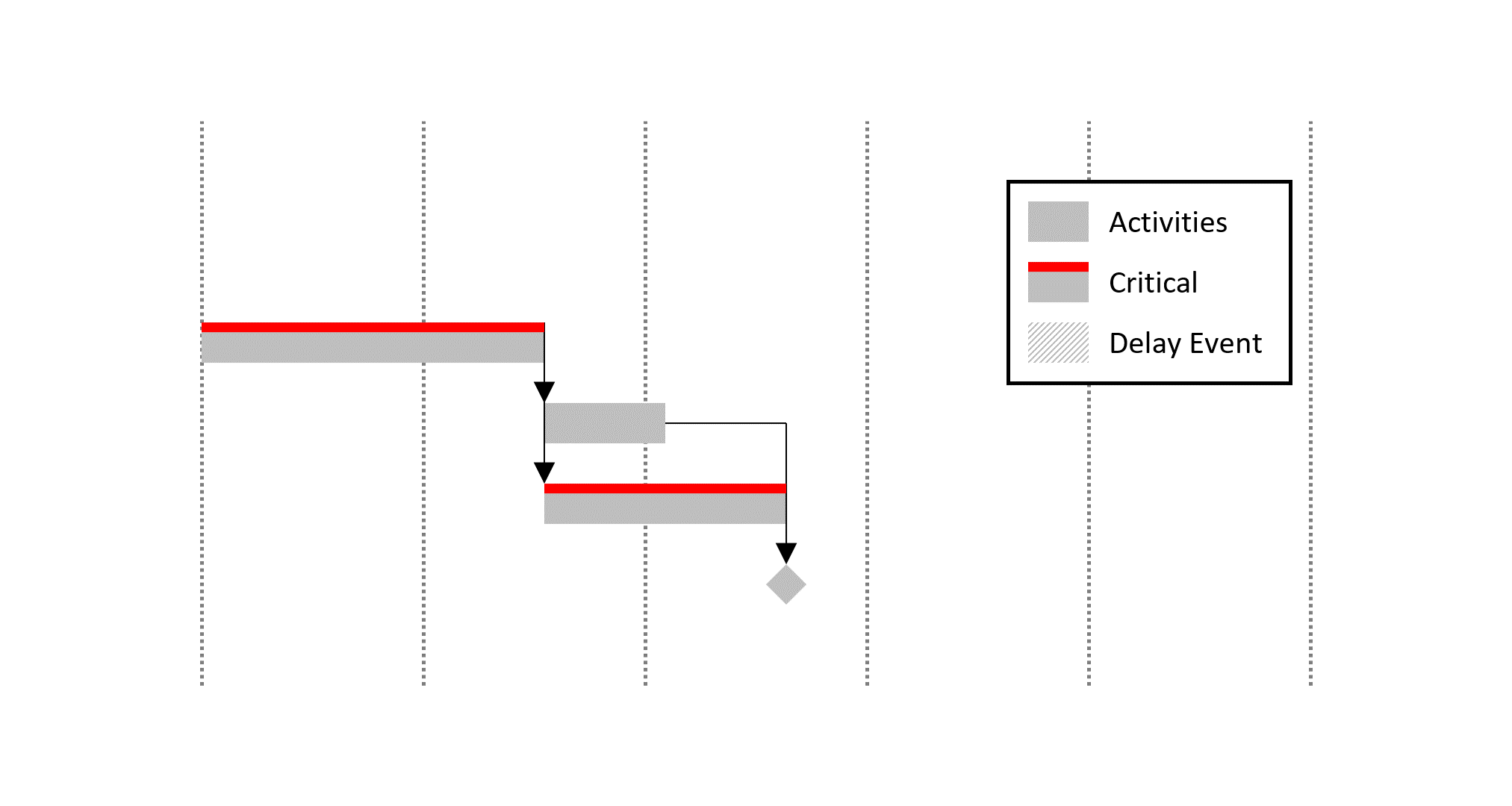
Calculating the critical path
On a project programme, identify the critical activities and hide the rest: the resulting partial network of activities is what we call the critical path. Often, the network is made of one sequence of activities which starts from the project start and finishes with the project completion date. Less often, there may be several sequences running in parallel: these are called concurrent critical paths and will be the object of a separate article.
An example of a project critical path is shown in the animated illustration below.
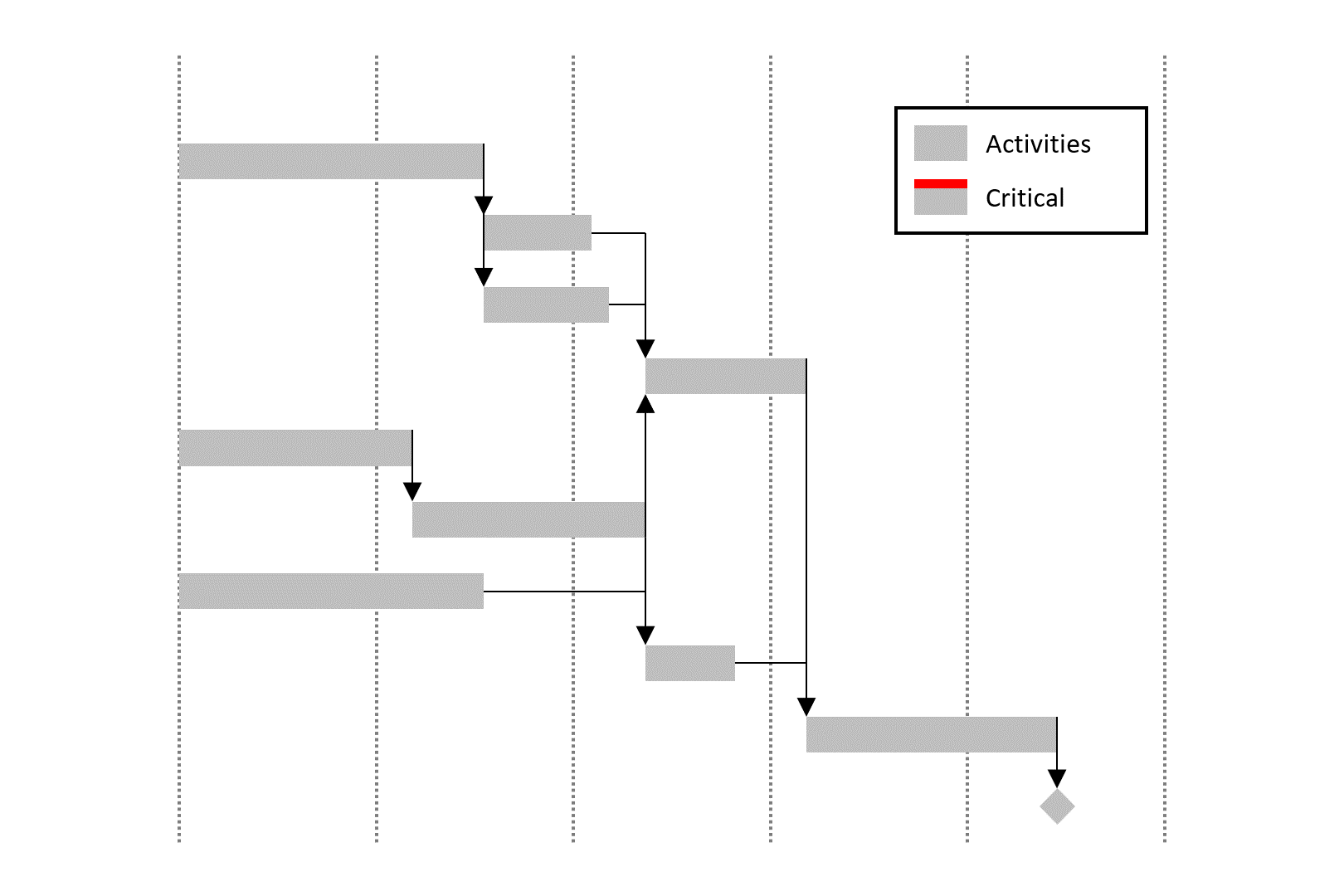
From an algorithmic perspective, the critical path is rather straightforward to calculate:
- Make all the activities start as early as early possible, taking into account any constraints (logic links) such as ‘do not start B until A is finished’ – this is called the forward pass.
- Next, starting from the project completion date, check the preceding activity which prevented it from completing earlier. Then trace the predecessors of this predecessor, and so on until reaching the start of the project – this is called the backward pass.
- The trace, also known as longest path, is the critical path.
This is shown in the animated illustration below.
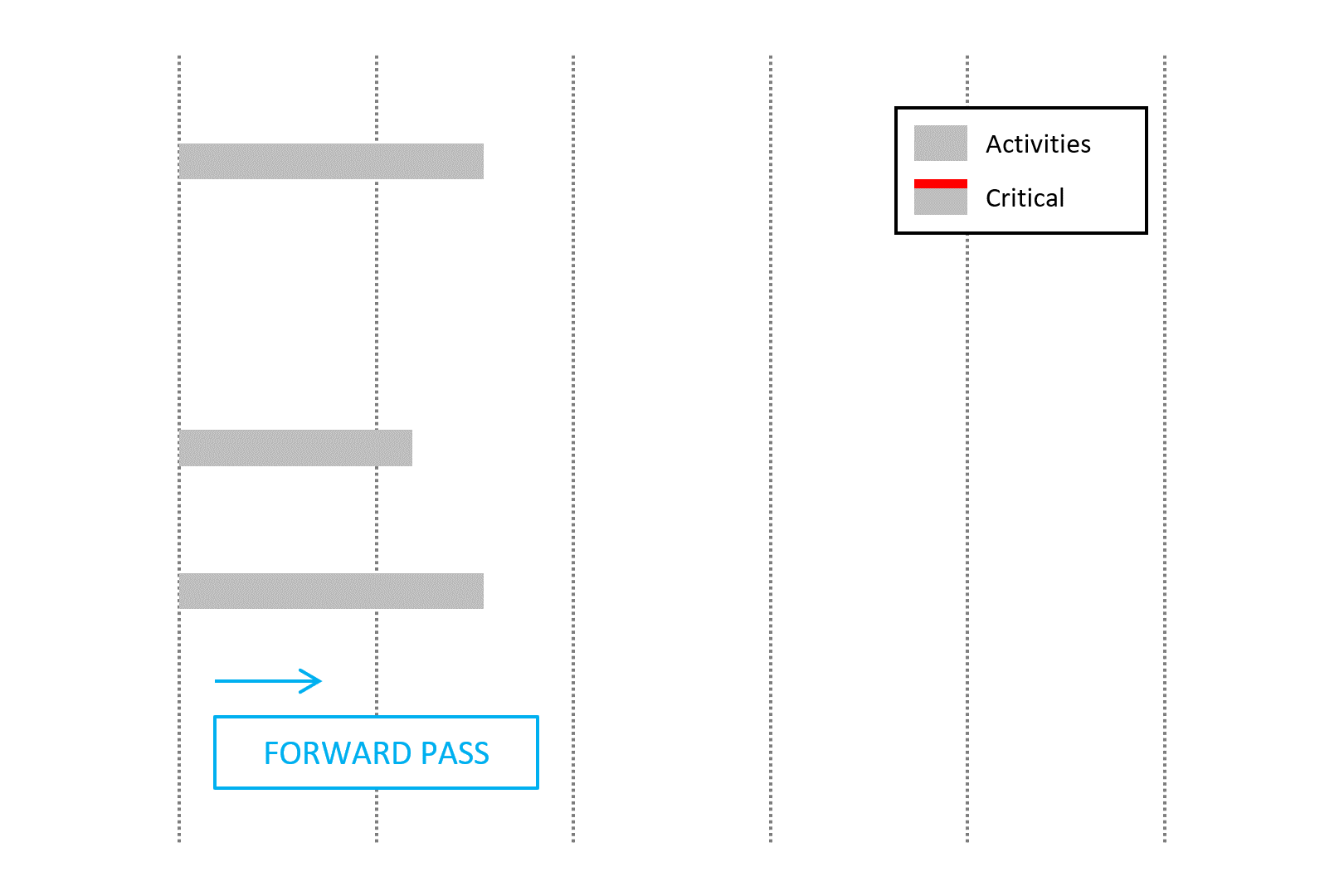
Critical path perspectives
Just like we may encounter two types of delay measurement perspectives, these same perspectives apply to critical paths. A prospective critical path is calculated based on the as-planned duration and logic links of future activities which are not yet performed. A retrospective critical path is calculated based on the as-built duration and logic links of past activities which are already achieved. As presented with further details in this article, prospective is theoretical, whilst retrospective is factual. For this reason, many forensic delay experts tend to favour a retrospective critical path. This decision is nonetheless not as obvious as it may seem; in fact, it is often inadequate to rely on this type of path unless some checks are being made. This will be the object of a future article. From these two critical path perspectives, we can derive four types of critical path.The As-Planned critical path (fully prospective)
The as-planned critical path is the critical path calculated on a network of activities which reflects how the works are expected to be performed: the as-planned programme. The as-planned programme is particularly useful when it is the project baseline, in which case the as-planned critical path may be referred to as the baseline critical path. The illustration below shows the as-planned critical path of the baseline of a theoretical mini-project.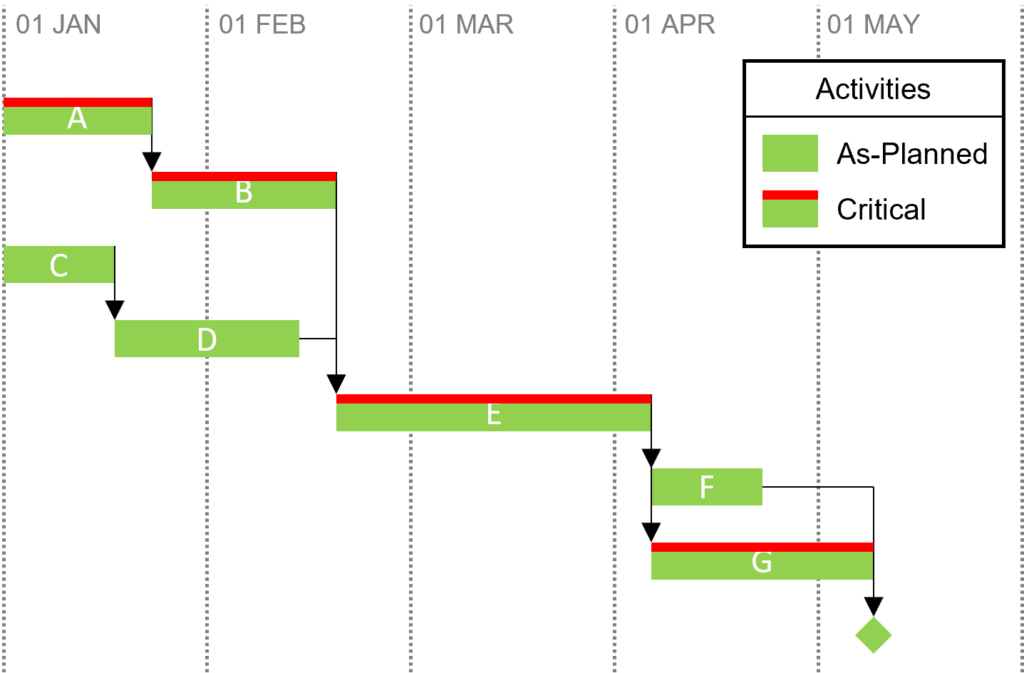
The As-Built critical path (fully retrospective)
The as-built critical path is the critical path calculated on a network of activities which reflects how the works were actually performed: the as-built programme. The illustration below shows the as-built critical path of our theoretical mini-project, where activities B, C, D and F suffered some delays.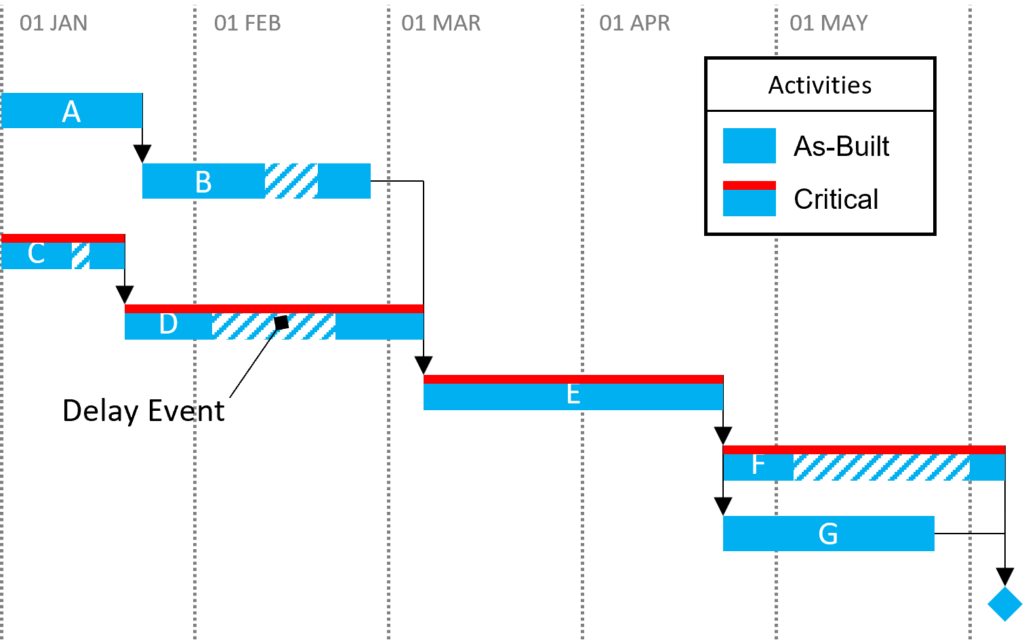
The as-built critical path answers the question: once the works were completed, what was the sequence of activities which eventually prove to have driven the project completion date? Due to its retrospective nature, it can only be calculated once the works were completed.
The Contemporaneous critical path (hybrid)
The contemporaneous critical path is the critical path calculated on a network where some activities reflect how the works were performed up to date, and others reflect how the rest of the works are expected to be achieved from this same date. In such case, the date is called the data date: for a given programme, it is the date which sets the boundary between the past and the future.
The contemporaneous critical path is a result of the prospective critical path from the project completion date up to the data date, followed by the retrospective critical path from the data date up to the project start date.
The illustration below shows the contemporaneous critical path of our theoretical project, as at a data date of 1st of march. Note how the critical path travels back from the project completion via as-planned activities, and then through as-built activities until the project start date.
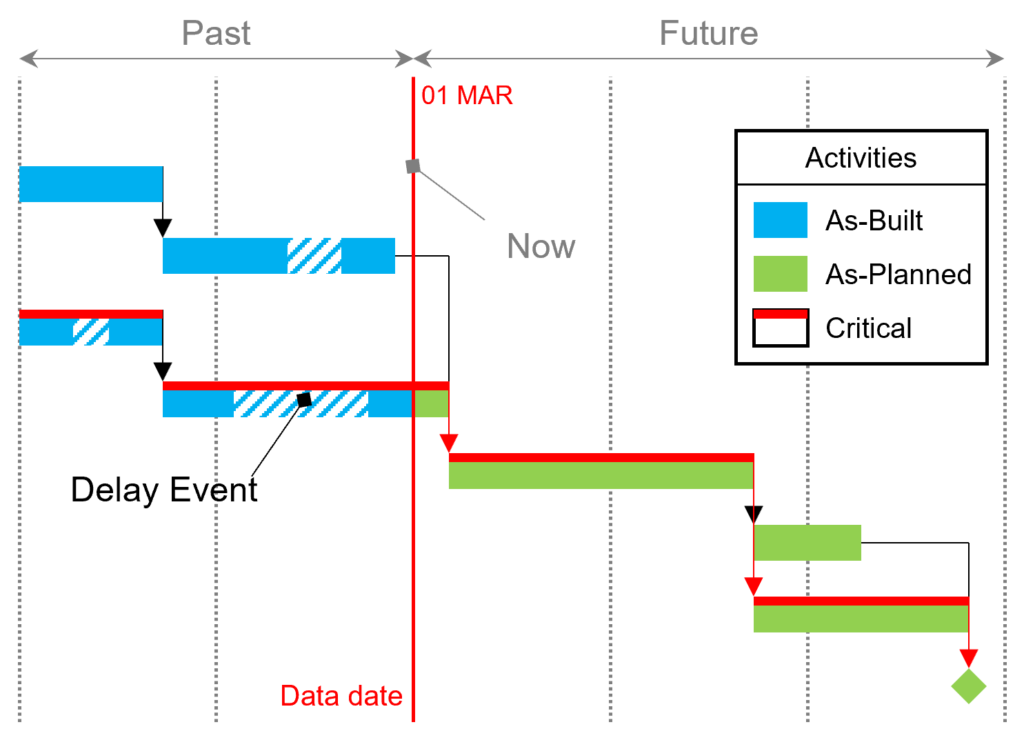
The contemporaneous critical path can be calculated at any time – or data date – during the progress of the works. It answers the question: at a given data date, what was the sequence of activities which was reasonably expected to drive the project completion date?
Interestingly, if calculated at the very beginning of the project, it corresponds to the as-planned critical path. Likewise, if calculated at the very end, it corresponds to the as-built critical path.
The Actual critical path
The actual critical path of a project is based on a compilation of the contemporaneous critical paths of all the data dates of this project. It is the sequence of these activities which were critical when they were progressing.
In order to calculate the critical path: (i) chose a data date close to the project start date, (ii) identify the contemporaneous critical path at that data date, and (iii) note the critical activity which was ongoing on that date: the activity contemporaneously critical (often just one). Repeat steps (i) to (iii) with small increments of the data date, until reaching the end of the project. The actual critical path is the sequence of the activities you noted. The time periods implied by ‘small increments’ should ideally remain as little as possible, but practicality and data availability often mean the increments are monthly, quarterly or sometimes even larger.
The animated illustration below shows the contemporaneous critical paths of our theoretical mini-project, for monthly increments of the data date.
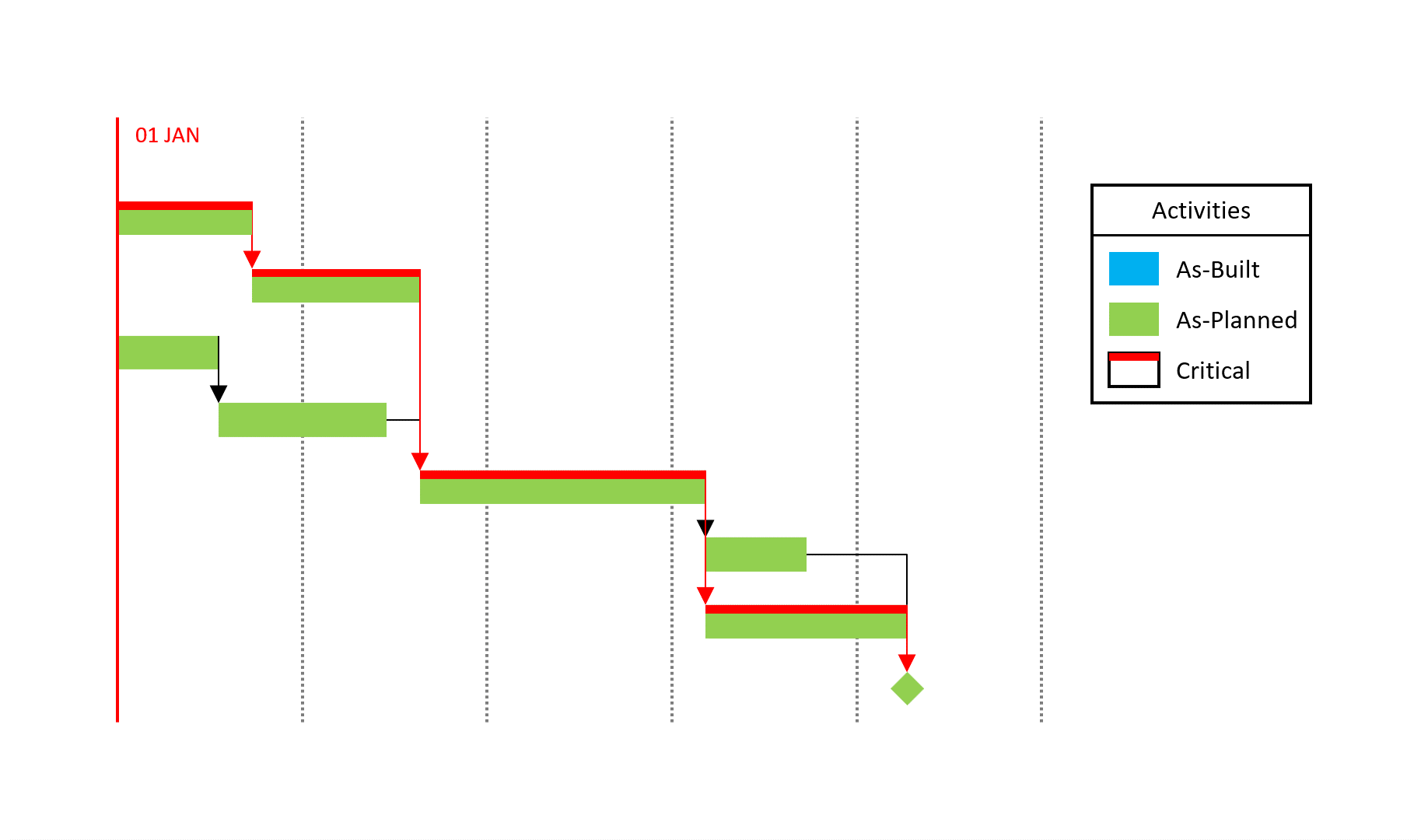
The purpose of the actual critical path is to identify the sequence of activities which required the utmost attention from the stakeholders, according to what was known to them at the time. That is, it assumes the parties did not know the future. I like to define the actual critical path as the timeline of these activities which prevented the project director or planner to sleep well at night.
The illustration below shows the activities contemporaneously critical for each of the monthly update of our theoretical mini-project.
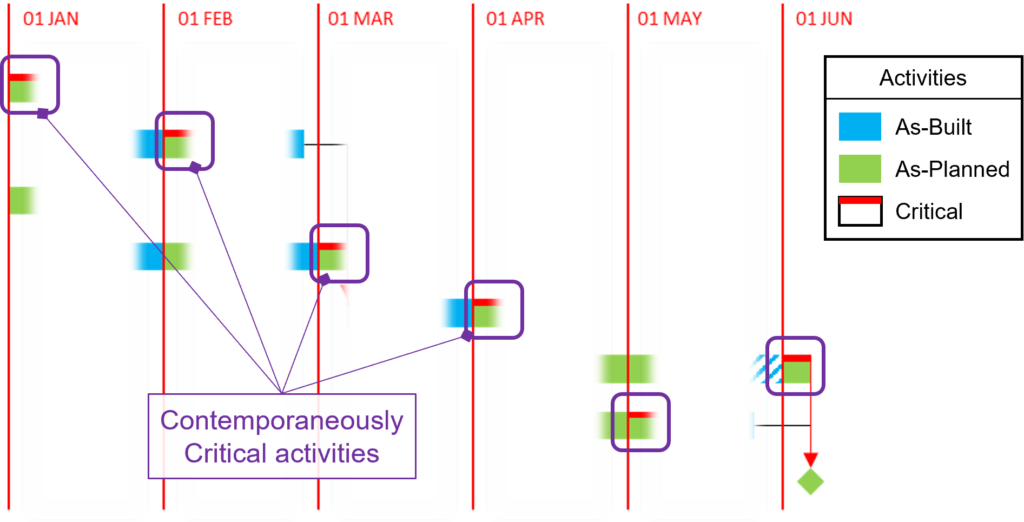
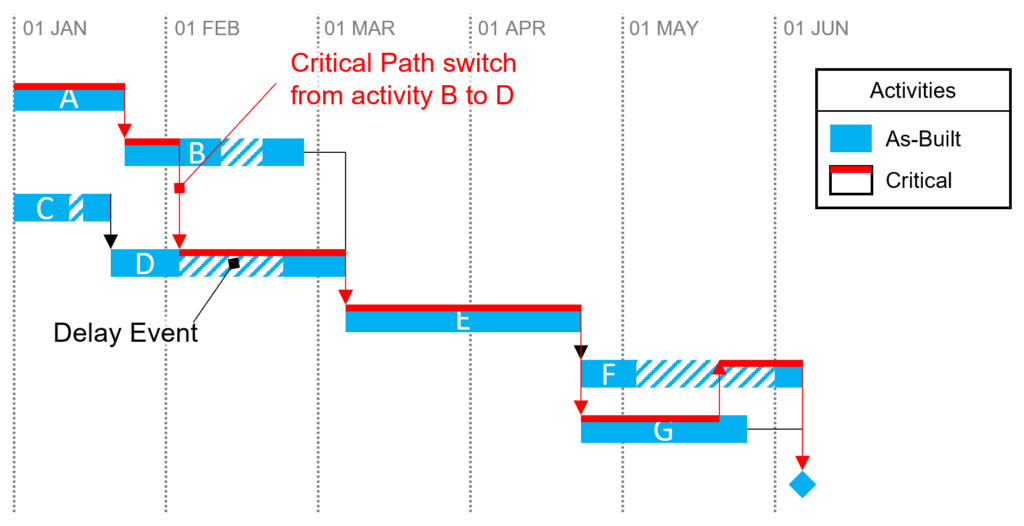
The actual critical path answers the question: what was the sequence of activities which were reasonably perceived to drive the project completion date at the time they were ongoing? Due to its contemporaneous nature, it can only be calculated up to the present date.
An advantage of the actual critical path is that it can be established up to a cut-off date and be subsequently updated without affecting the critical path for the period preceding the cut-off date. This is particularly powerful for interim delay analyses performed on ongoing projects, where consistency across the updates is especially relevant.
Interestingly, we can also note that the first activity in the sequence of the actual critical path corresponds to the critical activity according to the as-planned critical path. Likewise, the last activity in the sequence corresponds to the critical activity according to the as-built critical path. The actual critical path allows for a progressive transition from the as-planned to the as-built critical path.
In a subsequent article, we will categorize the main delay analysis methods based on which delay measurement perspective and which critical path type they are based on.

